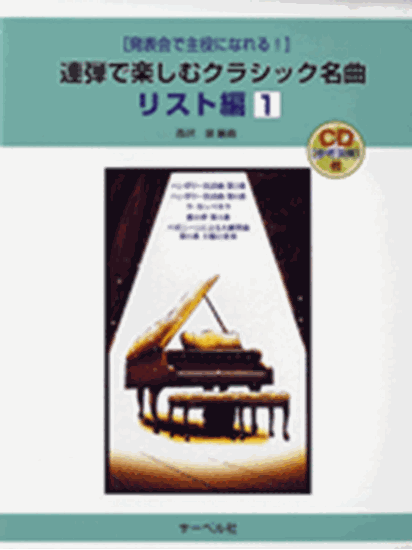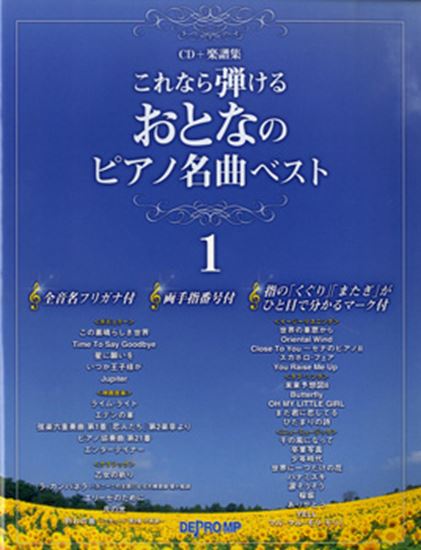Liszt, Franz : Grandes études de Paganini S.141 R.3b
Work Overview
Publication Year:1851
Instrumentation:Piano Solo
Genre:etude
Total Playing Time:29 min 00 sec
Copyright:Public Domain
Commentary (1)
Author : Yokota, Yuki
Last Updated: December 1, 2006
[Open]
Author : Yokota, Yuki
Paganini (1782-1840), the violin virtuoso, was said to have "sold his soul to the devil" due to the sheer overwhelming brilliance of his technique. Liszt first heard Paganini perform in 1832, when he was 21 years old. It is a famous anecdote that, overwhelmed with emotion at that time, he exclaimed, "I will become the Paganini of the piano!" This momentous encounter led to the creation of revolutionary works in the history of piano music.
First, Liszt composed Grande Fantaisie de bravoure sur La clochette (S. 420), based on the finale of Paganini's Violin Concerto No. 2. This piece became the prototype for the third movement, "La Campanella," of the later Études d'exécution transcendante d'après Paganini (S. 140), and Grandes études de Paganini (S. 141).
Then, in the Études d'exécution transcendante d'après Paganini, composed between 1838 and 1839, Liszt's study of Paganini reached a preliminary completion. However, Liszt was not content with this, and in 1851, he substantially revised the work and published the revised edition under the title Grandes études de Paganini.
Liszt did not merely arrange Paganini's scores for the piano. As declared above, he attempted to express the advanced techniques Paganini achieved on the violin through the unique idiom of the piano. This led to the invention of new idioms and techniques, resulting in highly innovative works of exceptionally high difficulty. Furthermore, in the revision to Grandes études de Paganini, the aim was to refine expression through more concise techniques. Through this revision, each piece transformed its character from an "étude" to a "character piece."
No. 1, "Tremolo" (G minor)
No. 1, "Tremolo" (G minor), consists of an introduction and coda based on Paganini's 24 Caprices No. 5, and a main section based on 24 Caprices No. 6.
No. 2, "Octave" (E-flat major)
No. 2, "Octave" (E-flat major), is based on 24 Caprices No. 17. It features the so-called "Lisztian chromatic scale," where the chromatic passages are divided between alternating hands.
No. 3, "La Campanella" (G-sharp minor)
The most famous piece in this collection, No. 3, "La Campanella" (G-sharp minor), is based on the third movement of Paganini's Violin Concerto No. 2 in B minor. Regarding this third piece, there are significant differences from the third piece of the first edition of Grandes études, namely Études d'exécution transcendante d'après Paganini. While the first edition prominently features material from Paganini's Violin Concerto No. 1 in D major, the Grandes études contains no material from the first concerto. Furthermore, the key signature has changed from A-flat minor in the first edition to G-sharp minor. It is also noteworthy that, compared to the first edition, the Grandes études version is a more brilliant piece, making extensive use of the high register and effectively employing repeated notes.
No. 4, "Arpeggio" (E major)
The original source for No. 4, "Arpeggio" (E major), is 24 Caprices No. 1. This piece also differs significantly between the first and revised editions. The score of the revised edition is written on a single staff, like for the violin, and is a much more faithful arrangement of Paganini's original compared to the first edition.
No. 5, "La Chasse" (E major)
No. 5, "La Chasse" (E major), is based on 24 Caprices No. 9. Compared to the first edition, the Grandes études version is again a more sprightly piece. In the middle section of the piece, a relatively rare double-note glissando can be observed in the history of piano music.
No. 6, "Theme and Variations" (A minor)
No. 6, "Theme and Variations" (A minor), is based on the most famous of Paganini's 24 Caprices, No. 24. Besides Liszt, many other composers, including Brahms, Rachmaninoff, Szymanowski, and Lutosławski, have written variations based on this theme. The original piece consists of 11 variations and a finale, and Liszt also followed this structure, with this No. 6 comprising 11 variations and a coda.
Movements (6)
Arrangements & Related Works(1) <Show>
Busoni, Ferruccio: Lizst-Busoni Sechs Etüden nach Paganini
Total Performance Time: 26 min 00 sec
PTNA & Partner Channel Videos(24items) View More
Sheet MusicView More
Scores List (65)

KMP(ケイ・エム・ピー) ケイエムピー

(株)ドレミ楽譜出版社

(株)全音楽譜出版社

(株)全音楽譜出版社

(株)ドレミ楽譜出版社

(株)音楽之友社

(株)ドレミ楽譜出版社

ミュージックランド

ミュージックランド

(株)タイムリーミュージック

(株)ドレミ楽譜出版社

(株)ドレミ楽譜出版社

(株)春秋社

KMP(ケイ・エム・ピー) ケイエムピー

(株)リットーミュージック

(株)ドレミ楽譜出版社

(株)ドレミ楽譜出版社

(株)リットーミュージック

(株)シンコーミュージックエンタテイメント

(株)リットーミュージック

ミュージックランド

(株)シンコーミュージックエンタテイメント

(株)リットーミュージック

ミュージックランド

(株)ヤマハミュージックエンタテインメントホールディングス

ミュージックランド

ミュージックランド

(株)ドレミ楽譜出版社

(株)ヤマハミュージックメディア

(株)シンコーミュージックエンタテイメント

(株)ドレミ楽譜出版社

(株)シンコーミュージックエンタテイメント

(株)シンコーミュージックエンタテイメント

ハンナ(ショパン)

(株)ヤマハミュージックエンタテインメントホールディングス

KMP(ケイ・エム・ピー) ケイエムピー

(株)シンコーミュージックエンタテイメント

(株)シンコーミュージックエンタテイメント

KMP(ケイ・エム・ピー) ケイエムピー

(株)全音楽譜出版社

KMP(ケイ・エム・ピー) ケイエムピー

(株)シンコーミュージックエンタテイメント

成美堂出版(株)

(株)ドレミ楽譜出版社

(株)ヤマハミュージックエンタテインメントホールディングス

(株)ドレミ楽譜出版社

(株)シンコーミュージックエンタテイメント

(株)ドレミ楽譜出版社

ミュージックランド

デプロMP

ミュージックランド

(株)ヤマハミュージックエンタテインメントホールディングス

カワイ出版

(株)シンコーミュージックエンタテイメント

(株)ドレミ楽譜出版社

(株)シンコーミュージックエンタテイメント

(株)自由現代社

ミュージックランド
![パガニーニ大練習曲集[原典版]《ラ・カンパネラ》旧稿付 - 楽譜表紙画像](https://ptna-assets.s3.ap-northeast-1.amazonaws.com/enc/books/2831.jpg)
(株)全音楽譜出版社

(株)全音楽譜出版社

(株)ヤマハミュージックエンタテインメントホールディングス

(株)ヤマハミュージックエンタテインメントホールディングス
























